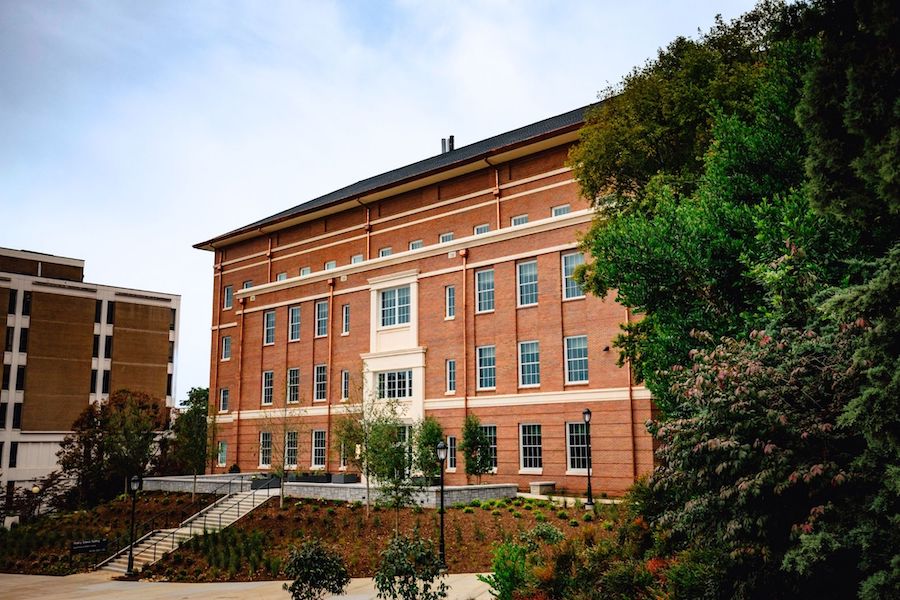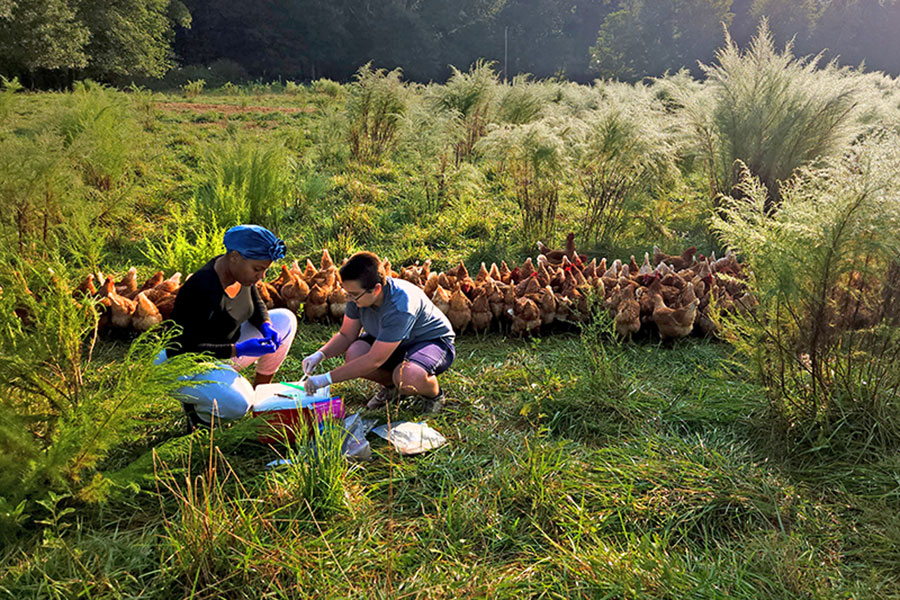By studying its body and genetic makeup, a University of Georgia geneticist wants to develop a chicken that converts its food into muscle mass, not fat, or simply one that is more healthful for consumers to eat.
“What we know so far is animals that utilize feed efficiently also utilize calcium, energy and protein in their food much more efficiently,” said Sammy Aggrey, a quantitative and molecular geneticist with the UGA College of Agricultural and Environmental Sciences poultry science department.
USDA funded research
To conduct this research, Aggrey received a three-year $449,575 grant from U.S. Department of Agriculture Cooperative State Research, Education, and Extension Service.
“Recently, because of technology, we are able to contain the whole chicken genome on a microchip,” he said. “We look at gene expression on this chip to determine which genes are turned on or off under different experimental conditions.”
Currently, chicken accounts for 40 percent of the meat produced in the United States. Obese birds mean less meat yield, and smaller breast muscles equal less money at the market. Reducing fat and increasing breast muscle could improve production efficiency while meeting consumer demand for a leaner cut of meat, he said.
Chicken diets are important, too
“Feed constitutes 70 percent of production input,” Aggrey said. “If we could utilize less feed and yield the same or greater amount of protein we would increase efficiency. Animals that use feed more efficiently are less fat, so we will simultaneously correct two problems.”
The same is true for humans.
“People who use protein more efficiently are leaner than ones who use food inefficiently, and it is all due to genetics,” Aggrey said.
Leaner chickens = leaner humans
The chicken genome has about 28,000 genes, a few thousand less than the 35,000 genes in the human genome. Aggrey and other scientists are mapping what traits the chicken genes represent. His goal is to isolate genes that regulate growth rate, fat deposits and muscle yield.
“One important way to understand the human genome is to compare it with the genomes of different animals, such as the chicken,” he said. “The organization of the chicken genome is much closer to that of a human than a mouse or rat.”
Unlocking this secret could mean a leaner piece of meat on the dinner table or a leaner person looking back in the mirror.
“Our long-term goal is to breed efficient birds and, in the process, identify genes that are involved with obesity,” he said. “And that has both animal and human implications.”
Aggrey is searching for additional grants to continue his research.






